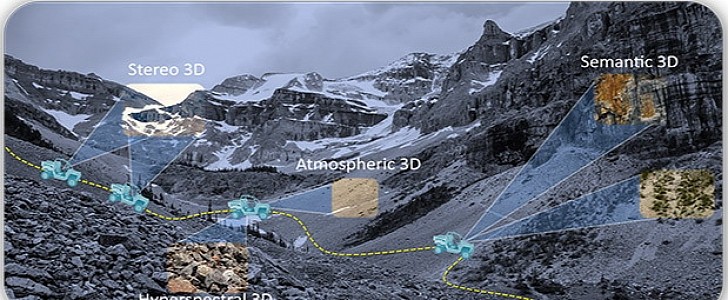Ever since autonomous vehicles have started taking off, sensors have also taken center stage as an essential component for the development of self-driving cars. Powerful illuminating systems are important for better navigation. However, this can become a problem in the case of military autonomous vehicles.
Active illumination is considered mandatory for autonomous systems to be able to navigate in the dark. But when it comes to defense applications, the light emitted by headlights, LiDAR or other type of sensors becomes a vulnerability, something that can be detected and traced by the enemy, from a long distance.
Secondly, it’s important for the military to be able to operate self-driving vehicles in a variety of environments and conditions, without having to rely on risky illumination systems – for example, at night, in fog, in the Arctic area and even underground.
The U.S. Defense Advanced Research Projects Agency (DARPA) is working on making autonomous vehicle able to navigate in complete darkness, by replacing active illumination with passive sensors that can go undetected. This passive 3D sensor would use the surrounding thermal light that is present in any type of environment.
Called Invisible Headlights, DARPA’s program is focused on quantifying the available information in ambient thermal emissions, defining what type of sensor design would be capable of collecting this information, and developing the actual new sensors.
In order to do that, the agency has recently announced the 4 teams that will work on each of these phases. Areté Associates, in California, will use virtual analysis to study the ambient infrared environment and develop 3D vision algorithms. Kitware, in New York, will use AI and machine learning algorithms to estimate local 3D scene structure. The Massachusetts Institute of Technology and the Purdue University in Indiana will then work on the actual sensor technology.
After studying thermal emissions and designing the new sensors and algorithms, the final phase of the Invisible Headlights will build passive sensors that will then be compared with active systems, in future tests.
Secondly, it’s important for the military to be able to operate self-driving vehicles in a variety of environments and conditions, without having to rely on risky illumination systems – for example, at night, in fog, in the Arctic area and even underground.
The U.S. Defense Advanced Research Projects Agency (DARPA) is working on making autonomous vehicle able to navigate in complete darkness, by replacing active illumination with passive sensors that can go undetected. This passive 3D sensor would use the surrounding thermal light that is present in any type of environment.
Called Invisible Headlights, DARPA’s program is focused on quantifying the available information in ambient thermal emissions, defining what type of sensor design would be capable of collecting this information, and developing the actual new sensors.
In order to do that, the agency has recently announced the 4 teams that will work on each of these phases. Areté Associates, in California, will use virtual analysis to study the ambient infrared environment and develop 3D vision algorithms. Kitware, in New York, will use AI and machine learning algorithms to estimate local 3D scene structure. The Massachusetts Institute of Technology and the Purdue University in Indiana will then work on the actual sensor technology.
After studying thermal emissions and designing the new sensors and algorithms, the final phase of the Invisible Headlights will build passive sensors that will then be compared with active systems, in future tests.






